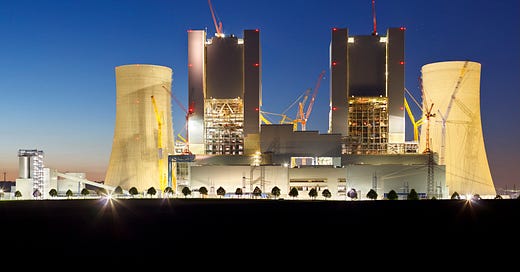Briefing: China’s Thorium Molten Salt Reactor Program
China's next step in energy advancement is moving forward.
China achieved a significant breakthrough in clean nuclear energy when it launched its first operational thorium reactor in 2023 within the Gobi Desert as part of its Thorium Molten Salt Reactor (TMSR) program. The deployment of domestic thorium as fuel and molten salt cooling systems allows this advanced technology to generate nuclear energy with significantly reduced long-lasting radioactive waste and lower risk factors for nuclear accidents and weaponization compared to current uranium reactors. China focuses its investments on expanding this technology to achieve commercial reactors by 2030 which will support its carbon neutrality goals while establishing itself as a global leader in next-generation nuclear power through its pursuit of energy security and pollution reduction.
Key Milestones:
Fuel reloading mid-operation: A global first, enabling continuous power generation without shutdowns.
Strategic goals: Scaling to a 60 MW thermal reactor by 2029 and commercial 100 MW reactors by 2030, with plans for hydrogen production and export.
Funding: Over $444 million invested since 2011, backed by state-led research institutions like the Chinese Academy of Sciences.
Historical Context
U.S. origins: The technology traces back to the 1960s Molten Salt Reactor Experiment (MSRE) at Oak Ridge National Laboratory, which faced corrosion and operational challenges.
China’s pivot: After the U.S. abandoned MSR research in the 1970s, China revived the concept using declassified data, aiming to address uranium scarcity and pollution.
China’s Strategic Commitment
Energy security: Thorium is abundant in China (e.g., Inner Mongolia’s reserves could power the nation for millennia).
Pollution reduction: Shifts from coal (50% of China’s energy) to nuclear could cut CO₂ emissions and smog.
Tech leadership: Aims to dominate Generation IV reactor innovation, with patents and export plans for Belt and Road nations.
Advantages of Thorium
Abundance: 3–4x more prevalent than uranium, with vast domestic deposits.
Safety: Operates at atmospheric pressure (no meltdown risk) and produces 500-year waste vs. uranium’s 10,000+ years.
Non-proliferation: Harder to weaponize than uranium/plutonium.
Efficiency: Molten salt allows higher temperatures for hydrogen production and industrial heat.
Geopolitical Implications
Energy independence: Reduces reliance on imported uranium and fossil fuels.
Global influence: Exporting TMSRs could reshape energy alliances, especially in developing nations.
U.S.-China comparison: China leads in MSR deployment, while the U.S. focuses on traditional reactors and startups like Core Power.
Future Prospects
China’s TMSR initiative could redefine nuclear energy by:
Scaling up: Commercial reactors by 2030, paired with hydrogen production.
Exporting technology: Leveraging Belt and Road partnerships.
Solving challenges: Addressing corrosion and material durability issues.
Conclusion
While technical hurdles remain, China’s fusion of historical research, strategic funding, and geopolitical ambition positions it as a frontrunner in the race for sustainable, next-generation nuclear power using Thorium. This initiative underscores a broader shift toward energy systems that prioritize safety, sustainability, and long-term resource security.
Further Reading:
Molten salt reactors were trouble in the 1960s—and they remain trouble today
Generation IV Nuclear Reactors
Map Reveals Where World's Thorium Reserves Are Located by Country
A Thorium Reactor in the Middle of the Desert Has Rewritten the Rules of Nuclear Power




